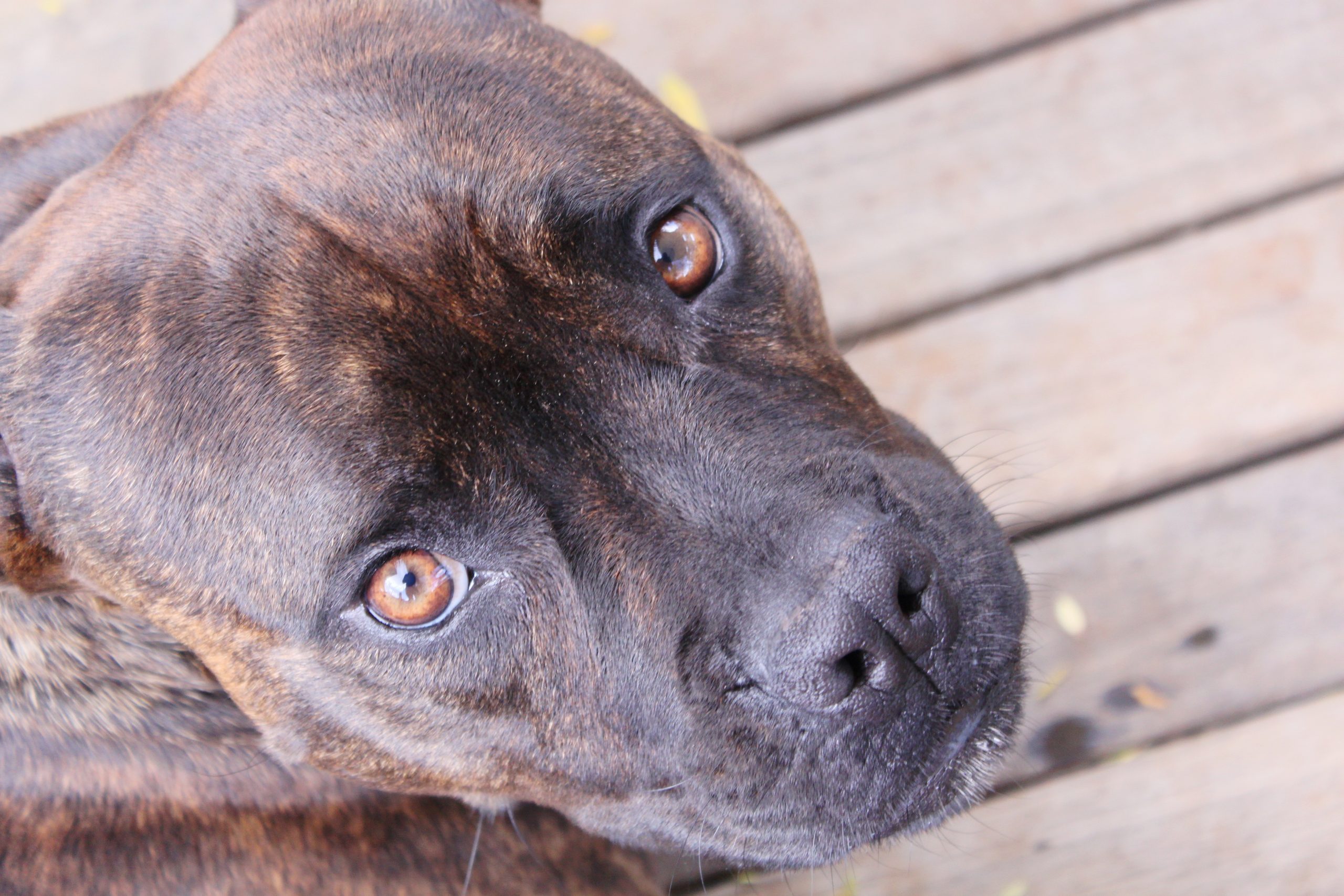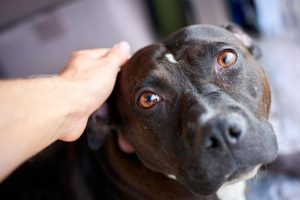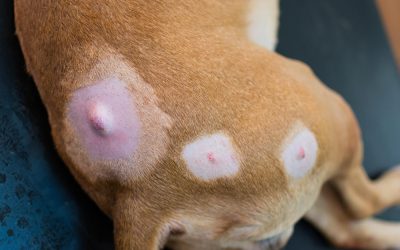Types of Dog Eye Discharge

Have you ever noticed a little gunk in the corner of your dog’s eyes? If so, you’re not alone. Known commonly as “eye boogers,” dog eye discharge is something most pet parents will encounter at some point. In many cases, it’s nothing to worry about, but sometimes, changes in appearance or quantity can signal something more serious.
This article will help you recognize the various types of discharge and what they might mean, so you can help keep your dog’s eyes comfortable and healthy.
Why Do Dogs Get Eye Discharge?
Dogs have tear ducts that help flush out dust and debris. A small amount of clear discharge is often completely normal, but if it starts looking thick, discolored, or excessive, it could be your dog’s way of showing that something’s wrong.
Here are some common reasons for dog eye discharge:
- Allergies: Pollen, dust, or mold can trigger watery eyes, especially during seasonal changes.
- Infections: Yellow or green mucus may suggest a bacterial or viral infection that requires a veterinarian’s attention.
- Foreign Objects: Sometimes dirt, grass, or small particles get trapped, causing irritation and discharge.
- Conjunctivitis (also known as Pink Eye): This condition causes redness, inflammation, and a sticky discharge.
- Breed Traits: Flat-faced breeds like Bulldogs or Pugs often have more visible discharge due to their eye shape.
Types of Eye Discharge and What They Mean
Various types of discharge can reveal different information about your dog’s eye health. Here’s a simple guide to help you understand what to look for:
- Clear and Watery: Often nothing to worry about, and maybe related to allergies or wind/dust exposure.
Other common causes may include:
- A bit of foreign material in the eye
- Breed-related facial features (like prominent or deep-set eyes)
- Blocked tear ducts
- Corneal scratches or wounds
- Glaucoma (increased pressure inside the eye)
If the extra tearing doesn’t come with redness, squinting, or signs of pain, it’s okay to monitor for a day or two. Sometimes it’s just nature doing a bit of housekeeping.
- White or Gray Mucus: Could be a mild infection or a chronic condition, like dry eye.
- Yellow or Green: These colors usually point to a bacterial infection and warrant a vet visit.
As veterinarian Jennifer Coates, DVM stated in PetMD:
“A dog whose eyes produce yellow or green discharge often has an eye infection, particularly if eye redness and discomfort are also evident.
Eye infections can develop as a primary problem or as a result of another condition (corneal wounds or dry eye, for example) that weakens the eye’s natural defenses against infection. Sometimes what looks to be an eye infection is actually a sign that a dog has a systemic illness or a problem affecting the respiratory tract, nervous system, or other part of the body.
Any dog who looks like they might have an eye infection should be seen by a veterinarian as soon as possible.”
- Reddish-Brown Tear Stains: Common in light-colored dogs, this condition is often harmless but can be associated with excessive tearing, known as epiphora. These tear stains are caused by a pigment called porphyrin, which is found in tears and darkens when exposed to air. For most dogs, tear staining is completely harmless — more of a cosmetic issue than a health concern.
Here are a few gentle ways to help reduce staining:
-
- Wipe the stained area daily with a clean, damp cloth or pet-safe eye wipe.
- Keep the hair around your dog’s eyes neatly trimmed.
- Try a vet-approved, antibiotic-free supplement designed to reduce staining.
- Wipe the stained area daily with a clean, damp cloth or pet-safe eye wipe.
- Thick White Discharge: May indicate a more serious condition, such as dry eye or corneal ulcers. This condition occurs when the tear glands stop producing enough moisture, and the body attempts to compensate by producing excess mucus.
As veterinarian Jennifer Coates, DVM stated in the PetMD article: “Left untreated, KCS can result in severe discomfort and blindness.
If you notice white-gray mucus collecting around your dog’s eyes, make an appointment with your veterinarian. They can perform a simple procedure called a Schirmer Tear Test to differentiate KCS from other conditions that may be associated with increased eye mucus production, like a foreign material lodged under an eyelid or inflammation of the ducts that drain tears.”
Thick White Discharge: When It’s Time to Dig Deeper
While many types of discharge are harmless, thick white discharge typically indicates a problem. It often signifies that your dog’s eyes aren’t producing enough tears, resulting in dryness and irritation. This can be uncomfortable — even painful — for your pet.
Here are a few conditions that can cause this kind of discharge:
- Dry Eye (Keratoconjunctivitis Sicca): This condition reduces tear production and can lead to thick discharge and corneal damage if left untreated.
- Corneal Ulcers: These are painful and can develop quickly, and often require urgent care.
- Uveitis: Inflammation inside the eye that can be tied to broader health issues.
When to See the Vet
It’s fine to gently clean your dog’s eyes at home, but there are times when professional help is necessary. Stay alert for:
- Discharge that doesn’t clear up within a few days
- Yellow or green mucus with a strong odor
- Redness, swelling, or visible discomfort
- Frequent pawing at the eyes or excessive blinking
How Can Pet Insurance Help You if Your Dog Needs Treatment?
Pet insurance can be a valuable tool in managing the costs of treating a dog’s veterinary expenses. By having a pet insurance policy in place, you can have peace of mind knowing that you can provide medical care for your furry companion without worrying about the financial burden. Pet insurance can help cover the costs of veterinary consultations, diagnostic tests, medications, and even specialized treatments if required.
Reimbursement
This method is the most common for pet insurance companies. You pay out of pocket for the veterinarian bill, and then the insurance company reimburses you for what’s covered under the insurance plan. The steps look like this.
- You pay the vet bill after your dog’s visit.
- You fill out the pet insurance claim form.
- Submit the claim form and other required documentation to the insurer.
- After the claim is approved, you will be reimbursed for eligible expenses.
What Does Odie Pet Insurance Cover?
Pet insurance covers various veterinary expenses, providing financial protection and peace of mind for pet owners. Here are the details of the coverage options offered by Odie Pet Insurance:
Illness & Injury Plan
The Illness & Injury Plan is an all-inclusive insurance plan designed to cover a wide range of medical needs for your pet. This plan includes comprehensive coverage for various illnesses, injuries, and veterinary services. Some of the covered items include:
- Veterinary exams and consultations
- Diagnostics (e.g., X-rays, lab tests)
- Prescribed medications
- Surgeries and hospitalization
- Rehabilitation, acupuncture, or chiropractic treatments
- Medically necessary supplies
- Euthanasia and cremation
The Wellness Plan
The Wellness Plan is a monthly membership that focuses on preventive care and covers routine veterinary services.
- Provides reimbursements for routine care items such as wellness visits (exams and vaccines), testing and parasite prevention, dental cleanings and at-home dental care, vitamins, supplements, and more.
- Through Odie’s partnership with Petivity, a leader in smart pet products and proactive care, Wellness Plan members can also receive reimbursements for Petivity devices and health kits, as well as eligible Purina food and supplements.
- Total reimbursement up to $700 per year.




